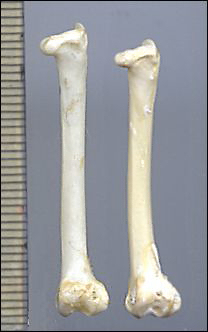
We're so used to women being smaller than men that we tend to accept it as the natural order of things—females are small, males are large. Those of you who watch nature TV may have seen elephant seals, where a large male may weigh nearly 3 tons, but a large female only two-thirds of this. Indeed, if you look around our desert, you may seem to find confirmation of your prejudice. Males of our Long-tailed Weasels are so much larger than the females that a novice might identify them as different species.
Nevertheless, this size differential is not universal, with many
species showing no difference at all. More upsetting to those who believe that mankind
sets the standards for the world, in some species it is the female who is the larger.
In fact, those who think of males as being large and fierce might consider our hawks,
eagles, and falcons. In these raptors, the females are the larger sex, and it generally
is among those often considered the fiercest—the falcons—where the size differential is
greatest.
![]()
Contributor: Arthur H. Harris, Laboratory for Environmental Biology, Centennial Museum, University of Texas at El Paso.
Desert Diary is a joint production of the Centennial Museum and KTEP National Public Radio at the University of Texas at El Paso.

Right femurs of the American Kestrel. The female femur is on the left and that of the male on the right. Scale is in millimeters. Scanned image by A.H. Harris. Laboratory for Environmental Biology specimens.
Jehl, J. R., Jr., and B. G. Murray, Jr. 1986. The evolution of normal and reverse sexual size dimorphism in shorebirds and other birds. Pp. 1-86 in Current Ornithology, vol. 3 (R. F. Johnston, ed.) Plenum, NY.
Kaiser, T. J. and Bucher, T.L. 1985. The consequences of reverse sexual size dimorphism for oxygen consumption, ventilation, and water loss in relation to ambient temperature in the Prairie falcon, Falco mexicanus. Physiological Zoology 58:748-58.
Montgomerie, R. D., Lundberg, A. 1989. Reversed sexual dimorphism in raptors: which sex changed size? Oikos 56: 283-286.